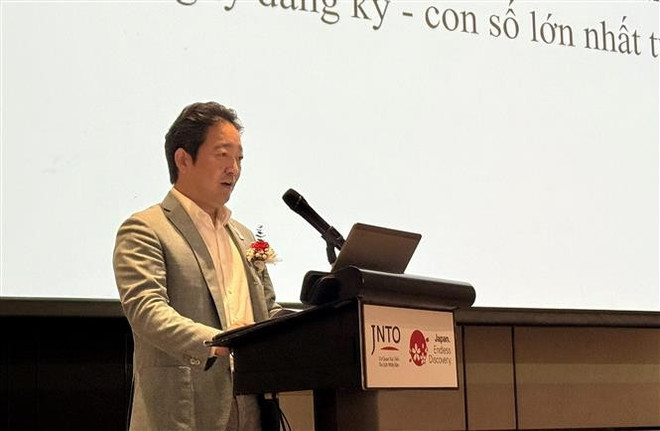Pham Van Thuy, Deputy Director of the Vietnam National Authority of Tourism, highlighted the strong and comprehensive strategic partnership between Vietnam and Japan, with tourism serving as a pioneering sector that bridges cultures and people. Japan has long been a key international source market for Vietnamese tourism.
In 2019, Vietnam welcomed over 950,000 Japanese visitors. Following the COVID-19 pandemic, the figure reached nearly 700,000 in 2024, and more than 340,000 in the first five months of 2025, an 18.3% year-on-year increase.
Japan is also a strategic partner in sustainable tourism development. Ongoing cooperation projects include human resources training, high-end product development, heritage conservation, and smart tourism solutions.
Thuy expressed confidence that shared cultural values and strong bilateral cooperation will further boost two-way tourism, contributing to post-pandemic recovery and long-term sustainable growth.

At the event, Deputy Ambassador of Japan to Vietnam, Ishikawa Isamu, said tourism plays a vital role in enhancing mutual understanding and also operates as a business, requiring insight into both customers and products. He encouraged Japanese travel representatives to explore Hanoi’s stylish cafés and bars to better understand local life, while urging more Vietnamese tour companies to visit Japan.
Aiming to attract two million Vietnamese tourists to Japan by 2030, the Japanese Embassy hoped the event would deepen bilateral tourism ties.
Matsumoto Fumi, Chief Representative of the Japan National Tourism Organisation in Vietnam, noted the positive growth in travel between the two countries, highlighting the vast untapped potential, with around 80% of Vietnamese people yet to visit Japan.
She also raised concerns about overcrowding at popular destinations due to mainly concentration on the “Golden Route” and peak seasons like cherry blossom (March–April) and autumn foliage (October–November).
Matsumoto hoped the event would help Hanoi-based travel firms discover alternative attractions and updated tourism materials, thereby expanding and diversifying the Japanese tourism market./.VNA